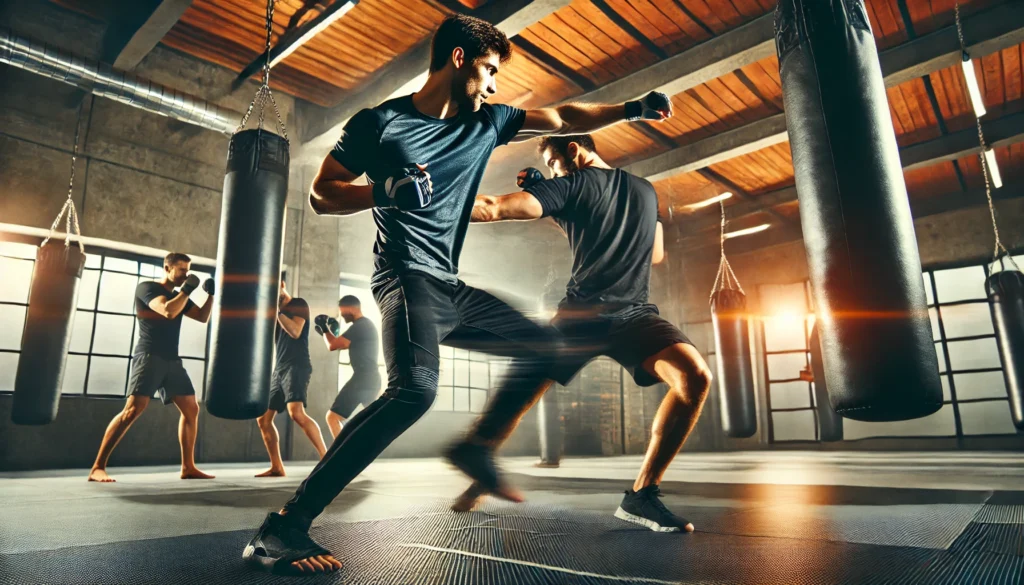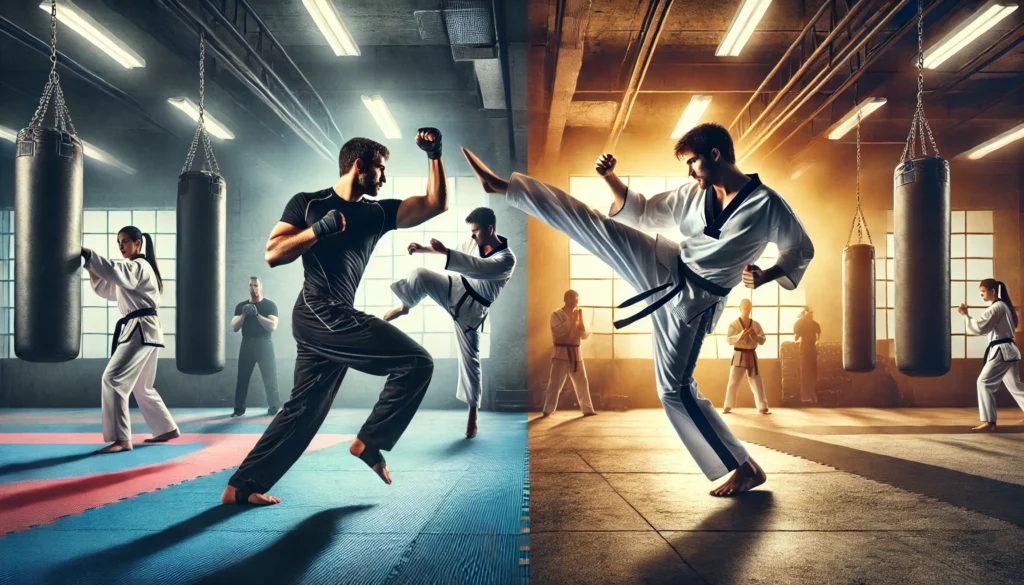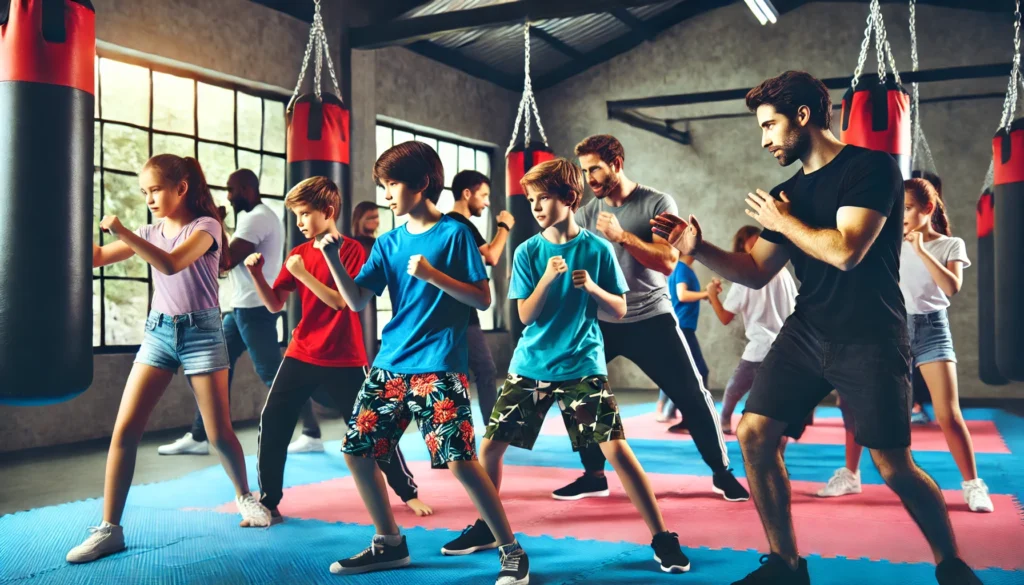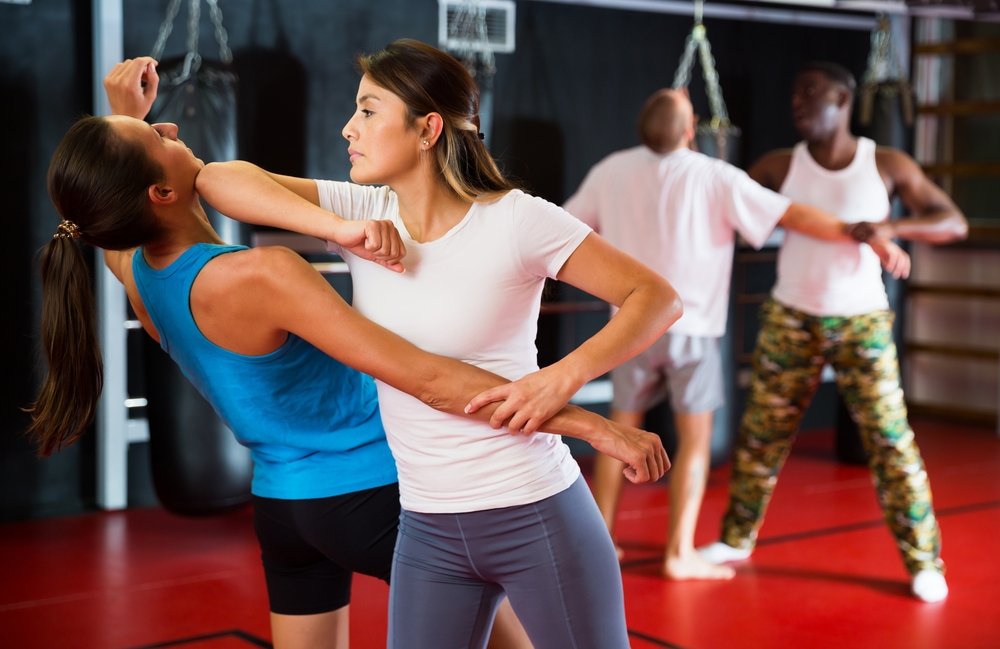
How Long Does It Take to Learn Krav Maga?
On average, it takes about 6 to 12 months of consistent training (2–3 sessions per week) to gain basic self-defense proficiency in Krav Maga. To reach an advanced level — where movements feel instinctive under stress — most students train for 3 to 5 years. However, progress depends on personal commitment, physical conditioning, and the quality of instruction.
At Guardian Krav Maga LLC in Bryans Road, Maryland, students start building real-world self-defense confidence within the first few months of hands-on training.
How Long Does It Take To Master Krav Maga
Learning Krav Maga is a journey, not a race. This self-defense system is practical, fast-paced, and designed to be accessible. But how long does it really take to learn Krav Maga? The answer depends on your goals, consistency, and experience level.
In this blog, we’ll break down what it takes to learn Krav Maga, how long it might take for different levels, and how you can speed up the process. Whether you’re a beginner or looking to earn a black belt, this guide has you covered.
What is Krav Maga?
First, let’s understand what Krav Maga is. Krav Maga is a self-defense system developed for the Israel Defense Forces (IDF). It blends techniques from boxing, judo, wrestling, aikido, and karate. Unlike traditional martial arts, it focuses on real-life threats rather than competition or sport.
Moreover, Krav Maga teaches students how to defend against punches, kicks, grabs, and weapons. It also includes training for mental toughness and situational awareness.
Krav Maga is simple, effective, and can be learned by anyone, regardless of size, gender, or age.

Why People Choose Krav Maga
People often choose Krav Maga because of its practical application. It’s designed for real-world situations, not for tournaments. Additionally, it helps build confidence, improve physical fitness, and teaches life-saving skills.
If your goal is to feel safer, react faster, and protect yourself or loved ones, Krav Maga is one of the best systems to learn.
Factors That Affect How Long It Takes to Learn
Several things influence how fast you can learn Krav Maga:
1. Your Fitness Level
If you’re already active or have martial arts experience, you may progress faster. However, beginners can still catch up with regular practice and dedication.
2. Consistency in Training
Training once a month won’t cut it. Attending at least 2–3 classes per week is ideal. The more consistent you are, the quicker you’ll improve.
3. Learning Goals
Do you want to learn basic self-defense or become an instructor? Your goals will shape how long you train.
For example:
- Basic defense skills: 3–6 months
- Intermediate level: 1–2 years
- Black belt/instructor level: 3–5 years
4. School and Curriculum
Each Krav Maga school may follow a slightly different curriculum. Some schools emphasize fitness more, while others focus on drills or real-world scenarios.
Stage 1: The First 3 Months — Building Awareness and Basic Reflexes
During your first few months at Guardian Krav Maga LLC, training focuses on fundamentals:
- Basic stance and movement: how to stay balanced and mobile.
- Simple strikes: punches, elbows, knees, and kicks.
- Defensive movements: blocking and redirecting attacks.
- Situational awareness: spotting potential danger before it happens.
This stage builds coordination, reaction time, and mental readiness. Most beginners are surprised by how quickly they feel stronger and more alert. Even within a few weeks, you start moving differently — standing taller, scanning your surroundings, and trusting your instincts.
💡 Tip: Training at least twice a week will help your body retain muscle memory faster.
Stage 2: 3–6 Months — Developing Reaction and Control
After the basics, Krav Maga training shifts toward controlled response and repetition. You’ll start to:
- Combine strikes into short, effective combinations.
- Defend against common attacks like chokes, grabs, or bear hugs.
- Train under mild pressure to simulate real scenarios.
- Improve your timing and decision-making speed.
At this point, many students in Maryland begin noticing the real-life benefits of Krav Maga: better confidence, stress relief, and improved physical endurance.
At Guardian Krav Maga LLC, instructors often include stress drills — short bursts of training that simulate real adrenaline rushes — so students learn how to think and act clearly even when their heart rate spikes.
Stage 3: 6–12 Months — Gaining Real-World Self-Defense Ability
By now, you’ve developed strong foundational reflexes. You’re starting to:
- React automatically to threats.
- Defend against multiple attackers.
- Transition between standing and ground positions.
- Use your environment to your advantage (walls, obstacles, etc.).
After about a year of consistent training, most students are ready to handle basic real-world confrontations — from street grabs to verbal escalation scenarios.
If your goal is to feel confident defending yourself or your family, this is the stage where that confidence starts becoming real.
⚡ Most students who train consistently for one year at Guardian Krav Maga in Bryans Road reach a solid defensive skill level.
Stage 4: 1–3 Years — Building Advanced Reflexes and Fluidity
After one year, the focus turns to efficiency and instinct. You already know the techniques — now you’re learning to execute them with speed, power, and precision.
Here’s what you’ll typically cover in this stage:
- Advanced defenses against weapons (knife, stick, gun).
- Multiple attacker drills.
- Ground fighting and grappling defenses.
- Scenario-based training under fatigue.
- Building endurance, accuracy, and adaptability.
This stage builds automatic reactions — you don’t think before you move; you simply respond.
At Guardian Krav Maga, instructors emphasize realistic scenario training, replicating Maryland’s common environments — parking lots, hallways, or confined spaces — so your techniques apply to everyday life.
Stage 5: 3–5 Years — Mastery and Leadership
Mastering Krav Maga doesn’t mean perfection. It means understanding when to act, how to act, and how to avoid unnecessary confrontation.
At this level, you’ll:
- Refine all techniques with precision.
- Help coach beginners and build leadership skills.
- Train under more advanced and complex situations.
- Focus on physical conditioning and mental sharpness.
Many students in this phase pursue instructor certification or use Krav Maga as a lifelong fitness and personal development discipline.
💬 Even advanced students continue training regularly — Krav Maga is about constant growth and readiness.
What Factors Affect How Fast You Learn Krav Maga?
Learning speed varies, but here are the main factors that affect progress:
1. Training Frequency
Students who train 2–3 times per week progress faster than those who come once a week. Consistency is key — every missed week sets back muscle memory.
2. Instructor Quality
Not all Krav Maga schools are equal. At Guardian Krav Maga LLC, certified instructors guide students through structured progressions, focusing on safety, form, and realistic application.
3. Physical Conditioning
Strength, endurance, and flexibility all affect how quickly your body adapts to the demands of Krav Maga. Even light conditioning outside class — running, stretching, or bodyweight exercises — accelerates your development.
4. Mindset and Stress Management
Krav Maga is as much mental as physical. Learning to stay calm under pressure determines how well you can apply what you’ve learned in real life.
5. Personal Goals
Your reasons for training matter. Someone preparing for self-defense readiness will have a different learning curve than someone focused on fitness or discipline.
The Role of Rank and Levels in Krav Maga
While Krav Maga doesn’t focus on belts like traditional martial arts, most schools — including Guardian Krav Maga LLC — use a progressive level system to track improvement:
| Level | Approx. Training Time | Focus Area |
|---|---|---|
| Practitioner 1–3 | 0–12 months | Basics, awareness, defensive posture |
| Practitioner 4–5 | 1–2 years | Intermediate strikes, multiple attackers |
| Graduate Levels | 2–4 years | Advanced scenarios, weapon defenses |
| Expert Levels | 4+ years | Instructor training, tactical mindset |
Each stage measures your practical ability to react under pressure, not just technical form.
How to Accelerate Your Krav Maga Progress
Here are a few proven tips that can help you learn faster and stay consistent:
- Commit to a schedule: Attend at least two classes per week.
- Focus on technique, not speed: Efficiency beats strength.
- Cross-train smartly: Add cardio or strength workouts on off days.
- Ask questions: Instructors are there to refine your form.
- Train with different partners: Adapt to various body types and styles.
- Review techniques at home: Even short 10-minute practice helps.
- Stay humble and consistent: Krav Maga rewards discipline over ego.
At Guardian Krav Maga, instructors encourage journaling — noting what you learned each session helps reinforce memory and track your progress over time.
Krav Maga vs. Other Martial Arts
| Martial Art | Average Time to Self-Defense Proficiency | Main Focus |
|---|---|---|
| Krav Maga | 6–12 months | Real-life defense and survival |
| Boxing | 1–2 years | Striking and movement |
| BJJ | 2–3 years | Ground grappling and submissions |
| Karate/Taekwondo | 3–5 years | Discipline, form, and sport |
| MMA | 2–4 years | Competition and hybrid fighting |
Krav Maga’s unique strength lies in its short learning curve. Because it’s based on instinctive movements, even beginners start applying skills effectively within months.
Learning Krav Maga in Maryland
For residents near Bryans Road, Maryland, Guardian Krav Maga LLC offers programs that fit all experience levels:
- Beginner and Intermediate Classes – learn at your own pace with professional guidance.
- Women’s Self-Defense Training – designed for confidence and empowerment.
- Youth Krav Maga – practical safety and discipline for teens.
- Krav Maga Fitness Programs – strength and cardio training inspired by real defense drills.
Classes are small, hands-on, and community-focused. Whether you’re from Bryans Road, Waldorf, or La Plata, this is where Maryland locals come to train for real-world readiness.
When Will You Feel Confident?
Confidence doesn’t come from knowing every technique — it comes from knowing you can act when it matters.
Most students report a noticeable increase in confidence after just two months of consistent classes, especially when they start responding instinctively during partner drills.
By the six-month mark, most students feel physically and mentally stronger. And by the one-year point, they’re walking taller, thinking faster, and moving with purpose.
The Real Answer: Learning Never Stops
Krav Maga isn’t something you “finish.” It’s a lifelong skill that keeps you mentally sharp, physically capable, and situationally aware.
Even instructors at Guardian Krav Maga still train, refine, and adapt — because the world changes, and so do real-world threats.
Whether your goal is confidence, fitness, or self-defense mastery, the key is to start — and keep going.
Is Krav Maga Hard to Learn?
Krav Maga is designed to be simple and effective. That’s one of its biggest strengths. You don’t need years of martial arts experience to start.
That said, it’s also intense. Classes are physically demanding. They often simulate real-life stress, which can be mentally exhausting.
However, most students say it’s worth it. The confidence, strength, and skill you gain make the hard work pay off.
Krav Maga vs. Other Martial Arts

You may be wondering how Krav Maga compares to other systems.
- Boxing: Great for striking, but lacks defense against weapons.
- Jiu-Jitsu: Focuses on grappling and submissions. Krav Maga uses elements of it but aims for quick escapes.
- Karate or Taekwondo: Often focuses on form and sport. Krav Maga is more aggressive and real-world focused.
Unlike most martial arts, Krav Maga doesn’t have a traditional code of conduct. Instead, it teaches you to neutralize threats and survive.
Kids & Teens Learning Krav Maga

Krav Maga is also suitable for kids and teens. Many schools offer youth programs that focus on:
- Bully prevention
- Confidence building
- Basic self-defense
- Situational awareness
Young learners typically progress at a similar pace. Some even advance faster because they’re more adaptable.
Adult Beginners and Older Adults
You don’t need to be in your 20s to start Krav Maga. Many adults in their 40s, 50s, and even 60s train regularly. With proper guidance, anyone can benefit.
Furthermore, Krav Maga can be modified for those with physical limitations. The goal is to build your confidence and ability – not to compete with others.
How to Get Started
Starting is simple. Look for a certified Krav Maga school near you. Most offer a free intro class.
Tips for beginners:
- Wear comfortable workout clothes
- Bring water and a towel
- Stay open-minded and patient
Your first few classes may feel overwhelming. But stick with it. Every expert was once a beginner.
FAQs: People Also Ask
Yes, you can learn basic self-defense skills in 3–6 months. Regular training and practice help you progress faster.
Ideally, 2–3 times a week for best results. More frequent sessions can lead to faster improvement.
Absolutely. Krav Maga is beginner-friendly and designed to be easy to learn.
Many students gain usable skills in the first few months. With regular training, you’ll gain confidence quickly.
No. Anyone can start, regardless of fitness level. However, improved fitness will help you progress more efficiently.
Conclusion:
To sum up, learning Krav Maga doesn’t take forever. Within a few months, you’ll build real self-defense skills. Within a few years, you’ll reach advanced levels.
It depends on your goals, effort, and consistency. Regardless of your background, Krav Maga gives you the tools to defend yourself—and that’s priceless.

